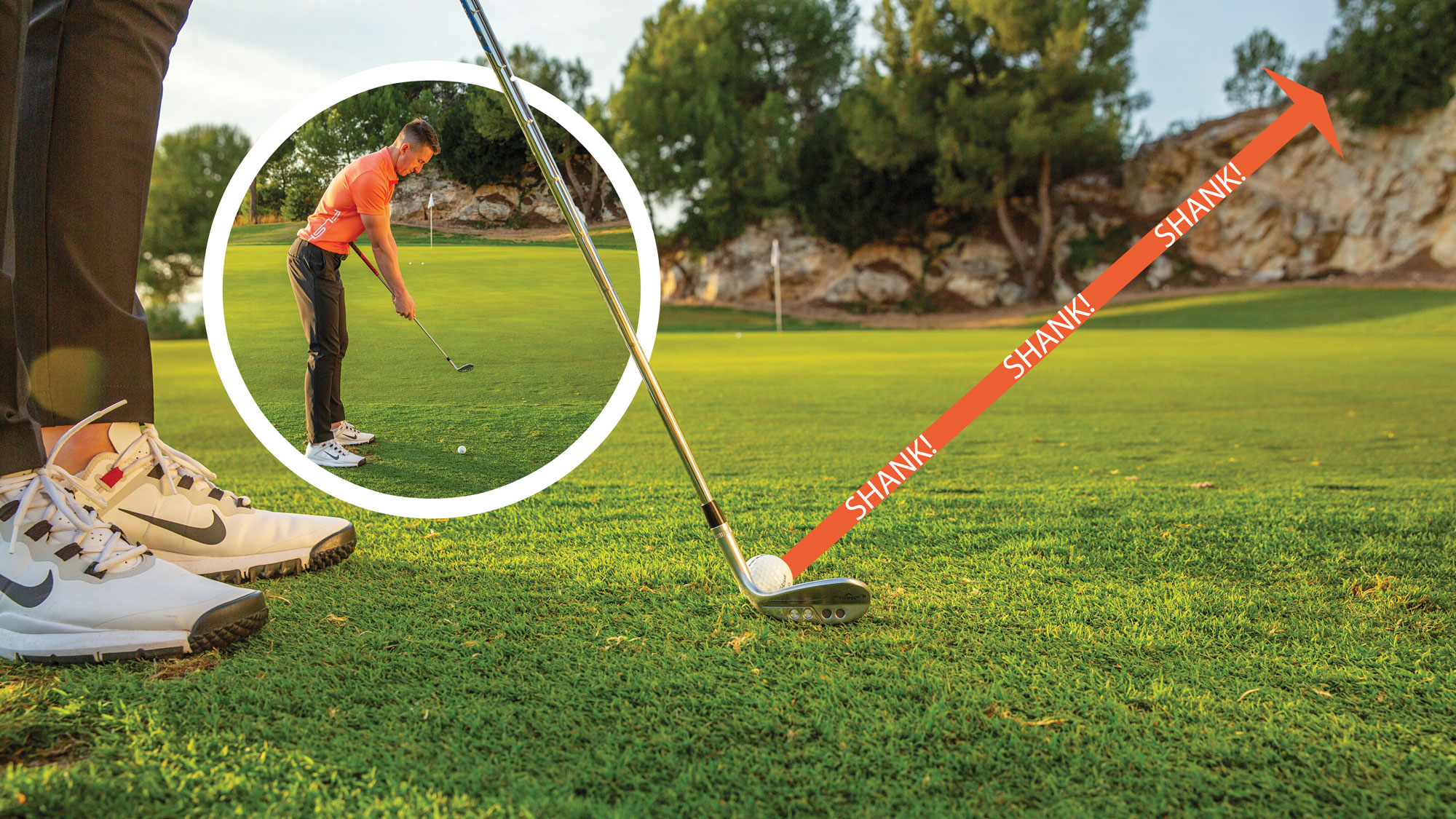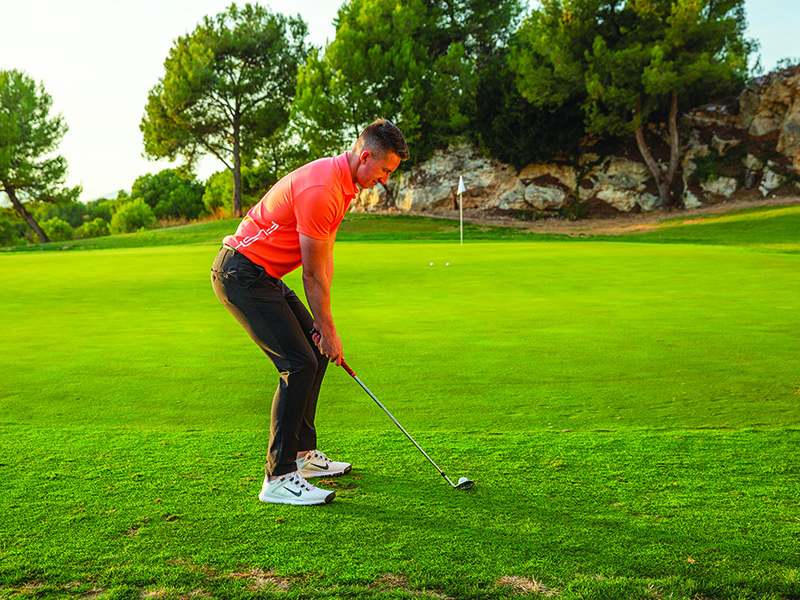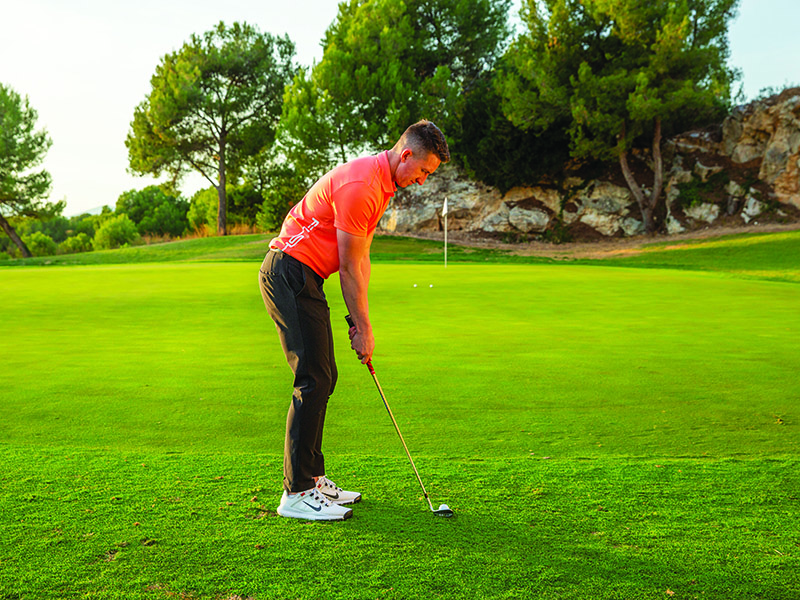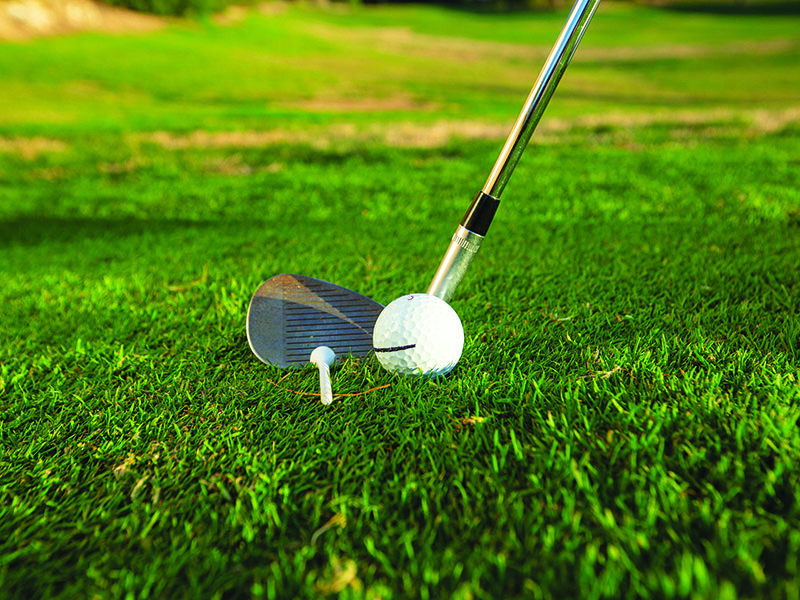How To Stop Shanking Your Chip Shots: This Simple Drill Will Help You To Find The Middle Of The Clubface
Shanking a chip shot has to be one of the most embarrassing and frustrating mistakes to make on the course, but this simple drill can save you in future rounds

Baz Plummer

The shank in golf is rarely a popular topic for discussion, especially if you are someone who has suffered with the shanks in the past. While this destructive habit can occur at any point in your round, it's perhaps most frustrating when you are trying hit a chip shot.
After doing all the hard work to navigate your way to the green, it can be infuriating to stumble with your short game, so we asked Golf Monthly Top 50 Coach Gary Munro to share his top tips for finding the centre of the clubface with a wedge in hand...
How To Stop Shanking Your Chip Shots
This frustrating shot stems from something causing the club to get further from you, which exposes the heel. Often, the fault is setting up as for a full shot with a wide stance, knees really bent and hands too low, which lengthens the club.
You need to build a solid set-up, with the legs a lot straighter and the club more upright to shorten it and bring it closer to you, so your worst-case strike is a bit out of the toe.

PGA pro Gary Munro demonstrating the incorrect chipping setup, often leading to a shank
Once you have the grip a bit higher and the legs straighter, your arms will hang naturally and you’ll be gripping down the club. A great feel is to grip down further, set it into your stomach and turn back and through.
Now, the club can’t get away from you. If you were to shank it, everything would be working away from you and there would be a disconnect from your stomach.

PGA pro Gary Munro using the correct setup when chipping to avoid the shank
The Drill
If you’re still struggling, here’s a great drill that needs only a tee peg. You’re now going to work on strike location, so place a tee just outside the ball and then remove the ball.
Subscribe to the Golf Monthly newsletter to stay up to date with all the latest tour news, equipment news, reviews, head-to-heads and buyer’s guides from our team of experienced experts.
Then, set up with the club behind the tee and swing the club, missing the tee and brushing the grass inside it. When you’ve built your confidence, try it with the ball.

This drill is designed to help you find the middle of the clubface when chipping and banish the shanks
Start at the tee. This will be a bit daunting as you’re addressing the ball in the heel, but it forces you to bring the club closer to you, which is the opposite to your previous pattern. Do this enough times and you’ll soon start striking your chips out of the middle every time.

Location: Pitch Golf London & Bedfordshire Golf Club
Gary is Director Of Golf at Pitch London. He is involved in the launch of the next Pitch site in Soho, which will open up the game to all levels. He is a big believer in equality and showcasing how fun golf can be for everyone. Gary has also coached at county level, and as County Manager has overseen a number of league wins for the U18s (Bedfordshire).
Teaching philosophy:
I don’t have a set model of swing that I coach and force on people - but impact and ball flight are everything, so I work it back from this. What impact characteristics does this player need to hit the shots and shoot the best score?
Advice for practice:
Split your practice into three sections: technical practice, skill practice (working on hitting different shots, for example, high, medium, low shots and shaping the ball) and finally pressure practice.
Students learn best when…
They self-discover. I don’t believe in coaches jumping on a player shot by shot giving more and more conflicting information, which can become confusing. I like my players to learn about their tendencies. I ask questions, allowing them to learn when they move well and why it’s good. I do the same for bad shots and ask them what they think caused that. Let them self-evaluate an answer so they develop the skill.
- Baz PlummerStaff Writer